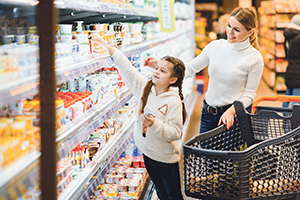From Peter Littleton, Technical Director, Christeyns Food Hygiene
Food safety has to remain top priority
The cost of energy, raw materials and transport has soared in recent months with global markets in the midst of a deep supply crisis. Two years of a pandemic followed by war in Ukraine have imposed changes on all market sectors. As we entered a phase of market restructuring post COVID, we have been faced yet again with another blow: the invasion of Ukraine and the isolation of Russia on the energy and raw materials supply markets.
 All of this is fuelling market instability. A situation that means increased focus on reducing costs as a priority. How do you do this without compromising food safety and avoiding other more serious problems related to health, safety and reputation?
All of this is fuelling market instability. A situation that means increased focus on reducing costs as a priority. How do you do this without compromising food safety and avoiding other more serious problems related to health, safety and reputation?
The food industry is in a difficult situation, as it needs to find a way to cope with all these increases while maintaining profit margins and without reducing product safety. And this is not just a UK but a global challenge.
Recent cases of food poisoning outbreaks have placed the whole sector on alert. Simply cutting costs in the cleaning and disinfection of facilities is not a good option, quite the opposite. Not complying with the established sanitisation protocols, and replacing certain products with others of lesser quality, has a direct consequence… that of reducing food safety.
The chemical industry has also been affected by this latest situation and increase in costs but it does not mean reduced efforts to produce quality, effective and efficient products supporting the food industry in producing safe food.
Recently, the European Food Safety Authority (EFSA) and the European Centre for Disease Prevention and Control (ECDC) announced an international outbreak of Salmonella typhimurium ST34 infections linked to chocolate products. Up to the beginning of April 2022, 150 cases had been reported, mainly in children under ten years of age, victims of food poisoning.
April also brought other news about contaminated products harmful to human health. For example, an outbreak of Listeria monocytogenes in pigs’ heads, Escherichia coli in France due to the consumption of frozen dough, or sibutramine in a food supplement. These are just a few examples of what could proliferate in the coming months if hygiene in production sites is not taken seriously.
According to the World Health Organisation, 4,700 people die each year in Europe from contaminated food, 420,000 worldwide, and 23 million Europeans fall ill as a result.
Reducing cleaning and disinfection is incompatible with ensuring food safety. Optimising is not cutting back, rather, it is about finding new, more efficient and sustainable tools and products that can lead to savings in time, water and energy consumption, which are the main factors contributing to the cost of hygiene operations.
Replacing detergents and disinfectants with others of inferior quality is not the solution. Reducing the frequency of cleaning and disinfection is not the solution either. Keeping hygiene processes within limits that ensure food safety is essential. The same applies to the right advice and the correct technical services for hygiene processes in the industry.
This is where a hygiene partner plays a key role.
In an advisory capacity, a hygiene partner can help establish routines and standards that ensure the suitability, quality and effectiveness of the services provided. The implementation of monitoring and control tools will contribute to improving the efficiency of the sanitisation processes, which, in turn, will help the industry to place safe foodstuffs on the market.
Customised, sustainable hygiene solutions achieve more efficient sanitisation processes at lower costs and with less time.
A comprehensive hygiene service covers all areas and factors involved in the sanitisation of food production and handling facilities: from the recommendation and supply of products and the equipment necessary for application, to the validation of the hygiene results. Not forgetting aspects such as the training and supervision of personnel involved in hygiene tasks, as well as the design of cleaning and disinfection protocols.
Automating processes can help reduce product usage, such as automatic belt cleaning systems or even ultrasonic cleaning and innovations in technology now mean that monitoring systems are available on the market for both open space cleaning systems and CIP systems. These monitoring systems not only control dosage and water/energy usage but show which areas can work more efficiently.
Products also play an important role. Opting for equally effective product alternatives, such as those available in concentrated formats that provide savings in transport, or as other types of products that are easy to rinse or that work at low temperatures, allowing savings in water and energy.
In the current cost crisis, with the relentless struggle to find savings, the various links in the food industry value chain must not forget their primary role: to produce safe food; to ensure that the products leaving the plants are safe. This threat should however be seen as an opportunity to look more closely at cleaning and disinfection processes and become more efficient.
Admittedly, this may take some time and effort, but it will lead to a better monitoring and control of all these processes in the long run. This is undoubtably the only valid method to define potential savings while maintaining a safe food production environment.
A reputational crisis can cause irreversible damage to a brand, not to mention the health consequences to consumers. Under no circumstances should we let our guard down on food safety; it is simply vital. Today, more than ever, the high level of professionalism of food industry workers and those in the supply chain must be paramount in the interests of food safety. We can all work together to make this happen.

